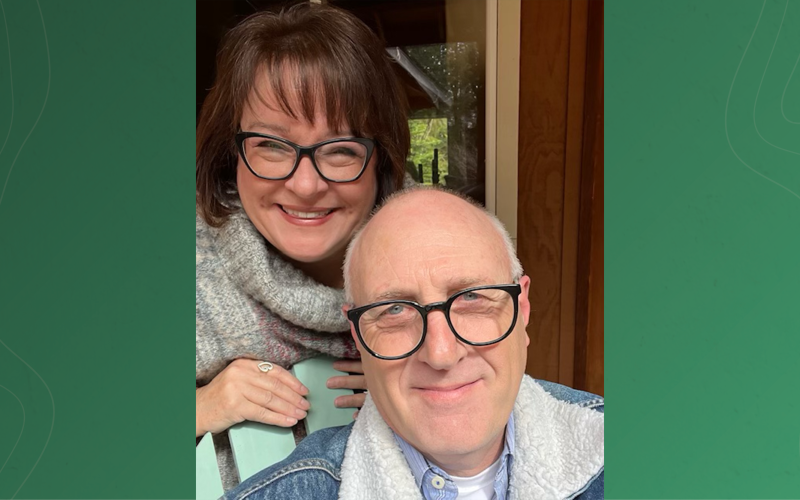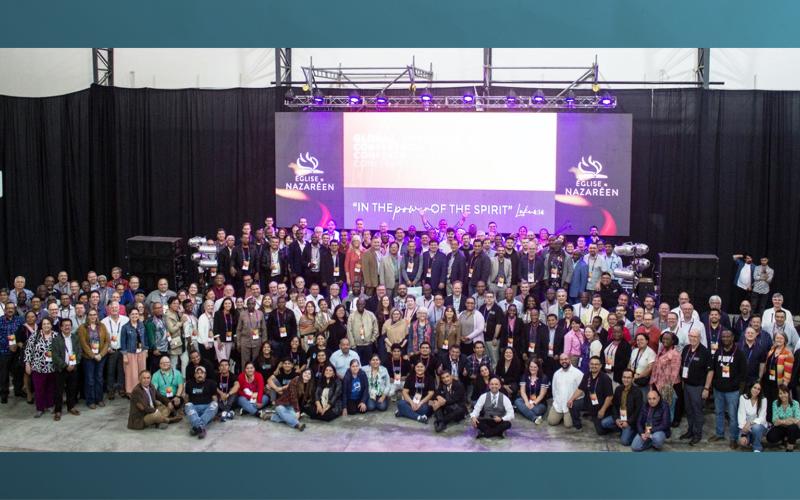
Vision 2020: CIS Field embraces challenge to double in 15 years

What would it look like to double the number of Nazarene churches in the CIS Field (Commonwealth of Independent States) in the next 15 years?
So far, it’s looking like families moving into cities and countries where the denomination does not yet have a presence, and in some cases drawing on the experience and insights of other churches and groups who have already been at work there for a long time.
20-20 vision
In 2015, the denomination’s six general superintendents met with Nazarene field strategy coordinators from around the world and, during one session, presented statistics that demonstrated the denomination has doubled in size every 15 years since it was first organized more than a century ago.
“What would it look like if we’re doubled by 2030?” asked Jerry Porter, general superintendent. Field Strategy Coordinator Scott Rainey remembers Porter then pointing out that, in some areas of the world, the Nazarene church is expanding well ahead of that pace. That’s when Porter threw out a challenge: “What if we doubled in five years – by 2020?”
Rainey had been sitting there with a pencil, writing down figures for what the CIS Field would look like with double the number of current churches. It would go from 44 local congregations to 88 and from more than 1,500 attendees to more than 3,000. Currently, there are Nazarene churches in six countries in the CIS; Rainey thought about expanding to be present in a total of 12 countries.
Just the year before, when Rainey had stepped into leadership for CIS, he met with the district superintendents and learned that the youngest church had been planted seven years before. But the leaders expressed a strong desire to grow again.
Rainey returned to his field after hearing about Vision 2020 and met with the leaders again.
“We prayed, we talked; I had them begin to pinpoint where they think we could be in their district in terms of numbers: attendance, membership, number of churches, and number of countries that we’re in. These were the categories of particular interest to me.
“I asked them to make faith projections for their district: By faith where do they see us by 2030? I was shocked at how close their added faith projections were to the ones for the field. We were looking at doubling in size – by faith – in 15 years, which basically says this to me: we don’t want the fast-growing places in the world to make up for our lack of growth.”
Their short-term goal was to add 16 churches by 2020, starting with four new churches in the first year.
God going before
And, it’s happening. In some ways, it seems God was orchestrating all of this before Rainey ever heard about 2020. Four families were already sensing that God was calling them into pioneer places to plant churches.
- Ukrainian family Oleg and Ira Kuz felt God was leading them to plant a church in L’viv, in the western part of Ukraine where there is no Nazarene church. Rainey and his family also sensed a burden to be involved in church planting, and at the Kuz’s invitation agreed to relocate and partner with them in the endeavor.
- Davide and Tatiana Cantarella, long-time leaders in Moscow, Russia, and throughout the CIS through theological education, had been feeling drawn to a new country where the Church of the Nazarene has no presence. Through an exploratory trip and numerous meetings with Christian leaders there, their family is now planning to relocate in January 2017.
- Another couple has relocated this summer to a sensitive area in the CIS to begin developing relationships and support local believers with the hope of starting Nazarene work in their new city.
- On the other side of Russia, a South Korean family is moving to Vladivostok, where they felt God was calling them to plant a church. Additionally, field leaders have chosen two locations to plant churches in 2017: Chisinau, Moldova, to start a Romanian-speaking congregation; and Georgia, where a couple from outside the Eurasia Region has agreed to establish Nazarene presence.
“Our Father drives us forward because he loves those people – the ones who have been reached and the ones who haven’t been,” said one of the church planters in the sensitive area. “These people are loved and this message is transformational.”
Hard soil
Behind all of these developments is the shadow of restrictive government legislation in several CIS countries, which limits evangelism to very specific settings and contexts and makes it difficult to register the church in new areas.
“This is going to happen because of hard work and total commitment," Davide Cantarella said. "I think it’s a reality that the doubling of churches can happen [but] it will take a commitment that maybe has not been there before.”
Rainey and Cantarella described how, in the first 20 years of religious freedom after the Communist government collapsed across the former Soviet Union, people were fascinated with Christianity, and any church that was opened flourished and grew.
“We have enjoyed incredible freedom, but also a rising in materialism and a lack of interest in any religious message,” Cantarella said.
As a result, several countries have been tightening their control over religious activity. When meeting with established Christian leaders in one of the new countries to find out what they knew about ministry there, Rainey said the leaders were very glad to have the partnership of another Christian denomination but were honest about the difficulty of working there.
Rainey recalls the local leaders said: “We’ve been praying and we sense that something new is happening in [our country], and your coming is like evidence that God is starting something fresh here and we welcome you. We’ll work with you.”
Yet one of the national Christian leaders cautioned, “In 1994, soon after the fall of the Soviet Union, we worked really hard to plant churches in [our country] and in that year we planted 30 churches. And this year, in 2015, we worked really hard to plant churches, just as hard as we did in 1994, and we planted one church.”
Rainey believes the Church of the Nazarene in the CIS Field will embrace the challenge.
“Once people see their leaders doing this – the commitment and perseverance to make steps to plant new cities and churches – I believe local churches will begin to get that passion again,” Rainey said. “People will begin to be bold. They’ll say, ‘Why don’t our group of 10 people start trying to plant a church?’ We hope this will become a church planting movement. We could far exceed our goal.”



